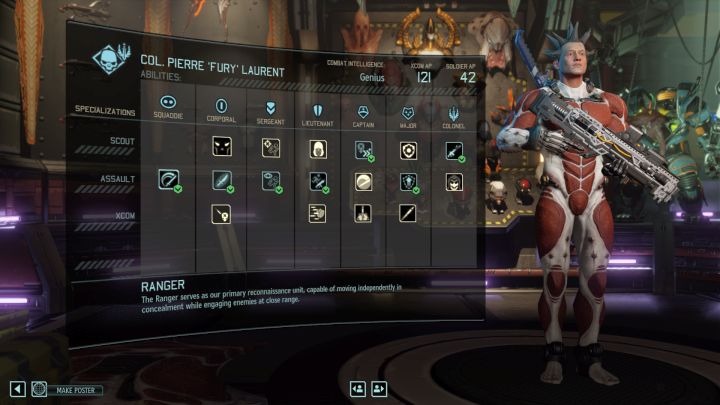XCOM 2 War of the Chosen: Ability points guide
Ability Points (AP) are another new element introduced in the War of the Chosen. These points are used to develop the new character classes: Reapers, Skirmishers and Templars as well as to unlock additional skills for the core units.

You can develop the new classes and unlock additions for regular soldiers. The system of obtaining abilities that can't be otherwise purchased and unlocked was also changed. In the core game, the Advanced Warfare Center was used for that - after building it, we were able to allocate a max of two additional abilities to soldiers, who otherwise would have no access to them at all. In the expansion, the building has been totally discarded, superseded by the APs.
The APs are awarded for certain actions on the battlefield, such as:
- Killing an outflanked enemy. The soldier has to flank an enemy and kill with any of their attacks;
- Killing an enemy while hidden. In order to do that, kill an enemy when you're still concealed - it's probably easiest at the very beginning of a mission;
- Killing an enemy from elevated ground;
- Killing an enemy with two soldiers, who have a bound (more info about that in the chapter devoted to relationships of the soldiers). If one soldier from such a duo manages to wound an enemy, and the other kills the same dude, they both get some APs;
- Neutralizing a Chosen One - "killing" them in a regular mission;
- Killing a Chosen One - permanently getting rid of them during a storm on their fortress;
- Killing one of the three alien lords - Viper King, Berserker Queen, Archon King;
- Completing some Covert Actions (for reference, see the chapter "Covert Actions").
Additionally, the soldiers from the core game get a nominal amount of AP for levelling up -the classes introduced in the expansion get that as well, but they get a lot more, since it's the only possible way for them to unlock new skills. More info about the differences of regular soldiers' AP can be found in the two following chapters.
?
You are not permitted to copy any image, text or info from this page. This site is not associated with and/or endorsed by the developers and the publishers. All logos and images are copyrighted by their respective owners.
Copyright © 2000 - 2025 Webedia Polska SA for gamepressure.com, unofficial game guides, walkthroughs, secrets, game tips, maps & strategies for top games.
